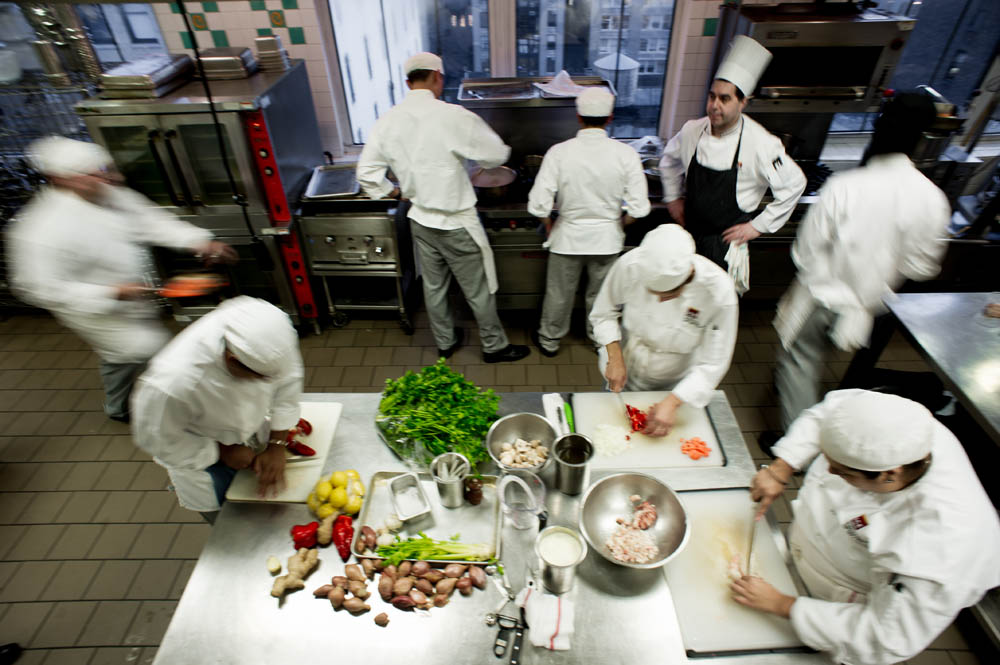Cooking is an art, but even the most experienced cooks make mistakes that can impact the taste, texture, and presentation of a dish. Small errors like mismeasuring ingredients or cooking at the wrong temperature can make a big difference. In this guide, we’ll highlight the most common cooking mistakes to avoid and share best practices to help you create perfect dishes every time.
1. Using the Wrong Measurements
Cooking requires precision, especially in baking. Incorrect measurements can throw off the balance of flavors and textures.
Best Practices:
- Always use proper measuring cups for dry and wet ingredients.
- Level off dry ingredients with a flat edge for accuracy.
- Use a kitchen scale for precise ingredient portions.
2. Overcrowding the Pan
Putting too many ingredients in a pan at once can lead to uneven cooking and steaming instead of proper searing.
Best Practices:
- Cook in batches to maintain even heat distribution.
- Use a large enough pan to allow space between ingredients.
- If necessary, preheat an extra pan to speed up cooking.
3. Not Preheating the Pan or Oven
Skipping preheating leads to longer cooking times and affects the texture of your food.
Best Practices:
- Preheat your oven at least 10-15 minutes before baking or roasting.
- Heat your pan before adding ingredients to ensure a good sear.
- Use an oven thermometer to check temperature accuracy.
4. Over or Under Seasoning
Seasoning can make or break a dish. Too much salt or spices can be overpowering, while too little results in bland food.
Best Practices:
- Add seasoning gradually and taste as you cook.
- Use a combination of herbs and spices to enhance flavor balance.
- Remember that some ingredients, like cheese and soy sauce, add salt naturally.
5. Using the Wrong Cooking Oil
Different oils have different smoke points and flavors, which impact the outcome of your dish.
Best Practices:
- Use high-smoke-point oils (e.g., canola, peanut) for frying.
- Olive oil works best for medium-heat cooking and salads.
- Avoid reusing oils excessively to maintain quality.
6. Rushing the Cooking Process

Cooking requires patience; rushing can lead to undercooked or tough food.
Best Practices:
- Allow food to simmer for proper flavor development.
- Let meat rest after cooking to retain juices.
- Avoid turning food too frequently while cooking.
7. Ignoring Recipe Instructions
Skipping steps in a recipe can lead to disastrous results.
Best Practices:
- Read through the recipe fully before starting.
- Follow instructions carefully, adjusting only when necessary.
- Take note of ingredient substitutions if needed.
8. Improper Knife Usage
Using the wrong knife or technique can slow down cooking and increase the risk of injury.
Best Practices:
- Keep knives sharp for better control.
- Use the right knife for each task (e.g., chef’s knife for chopping, paring knife for peeling).
- Learn proper knife skills to enhance efficiency.
9. Overcooking or Undercooking Food
Cooking food for too long or too short a time affects its flavor and texture.
Best Practices:
- Use a food thermometer to ensure meats are cooked to the right temperature.
- Follow cooking time guidelines for different ingredients.
- Keep an eye on delicate foods like seafood and vegetables.
10. Not Tasting as You Cook
Tasting food throughout the cooking process allows you to adjust seasoning and flavor.
Best Practices:
- Taste before adding extra seasoning.
- Check for salt, acidity, and spice balance.
- Adjust flavors gradually instead of all at once.
11. Storing Ingredients Incorrectly
Improper storage can lead to spoiled food and wasted ingredients.
Best Practices:
- Store dry goods in airtight containers.
- Keep dairy and meats in the coldest part of the fridge.
- Label and date perishable items to track freshness.
12. Forgetting to Rest Meat Before Cutting
Cutting meat immediately after cooking releases juices, leading to dry texture.
Best Practices:
- Let steaks and roasts rest for at least 5-10 minutes before slicing.
- Cover resting meat loosely with foil to keep it warm.
- Use a sharp knife to make clean cuts.
13. Cooking Everything on High Heat
High heat is not always the best option, as it can burn food on the outside while leaving the inside raw.
Best Practices:
- Use medium heat for even cooking.
- Lower heat for delicate foods like eggs and fish.
- Adjust heat based on the cooking method (searing vs. slow-cooking).
14. Not Cleaning as You Go
A cluttered kitchen can make cooking stressful and lead to hygiene issues.
Best Practices:
- Wash dishes while food is cooking.
- Wipe down counters frequently.
- Keep tools organized for easy access.
Looking for authentic Indian groceries and fresh ingredients? Check out Swagath Foods for high-quality products that elevate your cooking!
Conclusion
Avoiding these common cooking mistakes will help you prepare better-tasting, perfectly cooked meals with ease. Whether you’re a beginner or an experienced cook, these best practices ensure consistent success in the kitchen.
For more expert cooking tips and delicious recipes, visit IndianFoodGuide today!